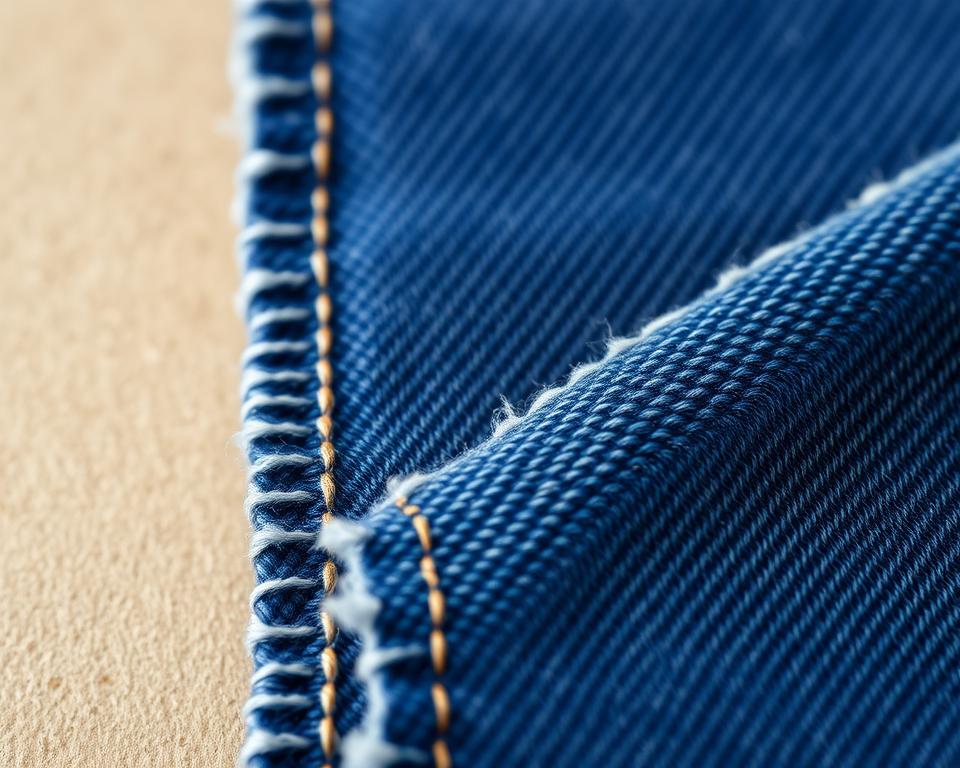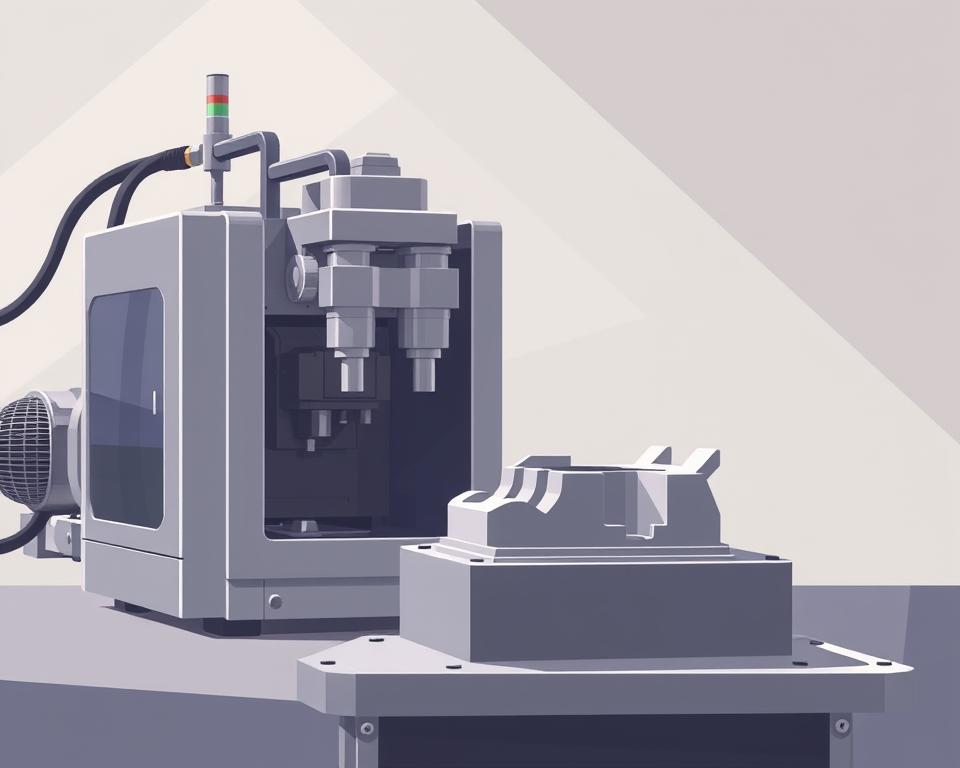Selvedge Denim Material Explained: Everything You Should Know
A single pair of vintage Levi’s 501s from the 1940s recently sold for $87,400 at auction. What caused these jeans to outprice a luxury vehicle? The answer lies in their selvedge denim material construction.
This high-end denim stands for more than simple material. It transports us back to when James Dean sported his 501s in Rebel Without a Cause, and Marlon Brando set the standard for cool in The Wild One. These cultural icons didn’t just wear jeans. They sported Nep denim made on historic shuttle looms.
Craft denim derives its title from the self-finished perimeters that avert fraying. “Selvedge” merges “self” with “edge” to denote this distinct weaving technique. Differing from factory-made denim, each yard of selvedge denim material requires patience and expertise to craft.
Its feel conveys a history through faint irregularities and innate variations. Each pair develops its own character as the indigo fades. This unique aging grants heritage denim its special appeal among collectors and fashion devotees alike.
Numerous people assume high-end denim endures beyond ordinary jeans. The truth is more nuanced. Selvedge build yields exquisite cloth with neat borders and deep texture. Yet durability hinges on cotton grade and weight, rather than solely on weaving method. What distinguishes craft denim is its capacity to age elegantly and form distinct faded patterns as time passes.
What Is Selvedge Denim Material
Selvedge denim textile differs from common denim on account of its exclusive construction and self-finished edges. It’s named for its “self-edge,” a tightly woven band that prevents fraying. This high-grade material signifies allegiance to slow fashion and age-old craft, marking a contrast with mass-made denim.

Decoding Self-Edge Construction
The term “selvedge” is a blend of “self” and “edge,” describing fabric with a clean, finished border. This narrow selvage forms along both fabric sides, eliminating the need for additional finishing. Traditional mills produce it in widths of about 30-32 inches, unlike modern denim’s 60-inch width.
How Shuttle Looms Create Unique Fabric Edges
Denim from shuttle looms derives its persona from antique weaving machines running at reduced speeds. They shuttle one weft yarn across the warp threads in one continuous action. This approach produces:
- Organic textural slubs
- A softer hand-feel than modern denim
- Firmly locked edges that avoid fraying
- Real irregular traits loved by denim aficionados
How Selvedge Differs from Standard Denim
Conventional denim is woven on projectile looms sending weft yarns across wider bolts. Such weaving leaves loose edge fibers requiring overlock stitching to stop fraying. Selvedge denim fabric, on the other hand, takes more time to produce. It provides greater longevity and a special style, meriting its loftier price tag.
Origins and Evolution of Shuttle-Loomed Denim
The legacy of heritage denim commenced in U.S. textile mills of the 1800s. Shuttle looms were central, weaving material with sealed edges to avoid fraying. This practice created indigo-dyed denim deliberately and meticulously, ensuring every yard was built with attention to detail. The narrow width of this fabric became a hallmark of artisanal denim production.
From 19th-Century U.S. Mills to Contemporary Revival
For over a century, American mills relied on shuttle looms. Names such as Cone Mills and White Oak furnished top denim to workwear makers. By the 1970s, faster projectile looms took over, replacing most shuttle equipment. That change stemmed from the push for more affordable, mass-made jeans. Many historic mills closed or modernized, leaving vintage looms to gather dust.
The Rise of Japanese Selvedge Excellence
During the 1980s, Japanese mills resurrected U.S. shuttle looms. The Osaka Five brands led this revival:
- Studio D’Artisan
- Evisu
- Fullcount
- Warehouse
- Denime
Those firms blended U.S. retro flair with Japanese exactness. They studied old Levi’s patterns, recreating classic indigo-dyed denim textures. By 2000, Japanese makers had overtaken the global artisan denim market.
The Importance of Traditional Weaving Today
Shuttle looms create special fabric features unmatched by modern equipment. Their reduced-speed weaving enables uneven textures and richer indigo absorption. Premium denim enthusiasts cherish these imperfections as signs of authentic craftsmanship.
| Shuttle Loom Features | Modern Loom Features |
|---|---|
| 29-31 inch fabric width | 60+ inch fabric width |
| 3-4 yards per hour | 15-20 yards per hour |
| Natural irregularities | Uniform texture |
| Self-finished edges | Cut edges requiring overlocking |
Making Premium Denim on Antique Looms
Premium denim production kicks off with the steady rhythm of antique shuttle looms. These contraptions stand apart from modern machines. They shuttle yarn across the full width at once, binding edges without further work. This method ensures selvedge denim has a clean, non-fraying edge.
Antique looms run slowly, churning out only 5–6 meters of selvedge denim material per day. This is in stark contrast to modern machines, which can weave 200 meters. The unhurried pace advantages the yarn via:
- Reduced fiber tension yields a gentler feel
- Natural irregularities remain intact for unique texture
- Irregular topography crafts unique fade patterns
- Thin widths (about 29–32 inches) minimize trimming waste
Running these vintage looms demands expert operators. Operators fine-tune tension, track cadence, and carry out maintenance. Each loom has its own unique character. Some date back to the 1920s, needing specific knowledge passed down through generations. This manual process renders shuttle-loomed denim a genuine craft item.
The slender width of unwashed denim from classic looms provides practical perks. Pant makers utilize the selvedge edge as the outrigger seam, avoiding waste. This flaunts the cloth’s true craftsmanship. Each bolt tells its own tale, boasting faint differences factory lines can’t duplicate.
Differentiating Raw Denim from Selvedge Denim
Many denim enthusiasts confuse raw denim with selvedge denim fabric. This mix-up appears during premium jean hunts. The fact is they denote separate facets of denim creation. Understanding this difference guides smarter choices and deeper appreciation of each style’s uniqueness.
Why Selvedge Doesn’t Always Mean Raw
Selvedge refers to the weaving method on vintage shuttle looms, creating self-finished edges. Raw denim means unwashed fabric straight from the mill. A selvadge raw denim fabric wholesaler might offer both washed and unwashed options. Labels such as Naked & Famous make selvedge jeans, occasionally pre-rinsed or with elastane.
The loom process stays constant. But finishing alters the material’s hand-feel and aesthetic completely.
Washed and Unwashed Denim Compared
All denim starts as dry denim prior to wash. Weavers ship both standard and selvedge bolts unwashed. Key contrasts include:
- Raw denim forms distinct fade lines with wear
- Washed denim delivers immediate softness and size consistency
- Sanforized raw shrinks little after initial laundering
- Unsanforized cloth contracts substantially when wet
Breaking Down Common Misconceptions
Raw denim isn’t exclusively shuttle-loomed. Contemporary projectile looms likewise churn out unwashed textile. Their appeal converges since consumers prize longevity, customization, and artistry in both selvedge and raw denim. Both types attract denim heads willing to invest time for that perfect custom fade.
How to Identify Real Selvedge Denim
When you’re in the market for rainbow selvedge denim, being able to spot genuine selvedge denim material is key. It sets you apart from ordinary buyers. Real selvedge denim has unique traits that set it apart from regular denim. Knowing these signs guarantees you’re buying true high-end denim.
Finding the Selvedge ID
The simplest way to identify selvedge denim is by checking the outseam. Roll your cuffs and examine the seam on the leg’s outer side. Real selvedge denim shows a neat, sealed edge with dyed yarns interwoven. This self-finished edge eliminates the need for overlocking stitches found on regular denim.
When you cuff your jeans, the selvedge ID becomes visible, adding a unique touch to your style. The colored edge yarns run continuously down the outseam, creating that signature look denim enthusiasts adore. Non-selvedge jeans, on the other hand, have cut edges covered with serger stitching to prevent fraying.
Identifying High-Quality Construction
Quality premium denim is evident through several construction details:
- Compact, consistent weave without loose fibers
- Clean selvedge edges without additional stitching
- Uniform edge thread color along the outseam
- Dense fabric weight typical of shuttle-loom production
Why Rainbow and Redline Selvedge Are Unique
Rainbow selvedge denim features multiple colored yarns in the selvedge ID, creating a unique multicolor edge. Redline selvedge, the renowned style, features red edge yarns and originates from heritage American mills. These distinctive selvedge variants fetch more owing to their rarity and visual charm. Brands often showcase these details in listings, aiding you in spotting genuine heritage denim.
Why Craft Denim Costs More
The cost of artisanal denim often shocks newcomers. A set of selvedge jeans may run three to five times higher than standard jeans.
Comprehending what drives these costs shows the actual value of premium denim.
Shuttle looms operate at a far slower rate than modern counterparts. While industrial looms produce fabric quickly, vintage shuttle looms weave only 1-2 meters per hour. This slow process means a single roll of heritage denim takes days, not hours.
The narrow width of selvedge fabric adds to the cost. Whereas conventional denim comes 60 inches wide, shuttle-loomed premium denim measures only 28–32 inches. This restricted width entails meticulous layout and cutting to minimize waste.
Artisan denim is produced in limited lots. Firms such as Okayama’s White Oak and Kuroki favor excellence over volume. They employ master craftsmen who oversee every step:
- Hand-checking yarn tension
- Adjusting loom settings for each fabric type
- Inspecting every meter for flaws
- Managing rope-dyeing processes that take weeks
These denim makers view their craft as art. They play with distinct yarns and hone indigo-dye recipes handed down through the lineage. Backing heritage denim helps mills safeguard textile legacies and artisans devoted to their work.
Wholesale Choices for Black Selvedge Denim Fabric
Premium denim availability now reaches beyond Japan’s heritage mills. American brands now compete, providing a wide range of black selvedge denim fabric wholesale. Choosing the best vendor requires grasping telltale signs and true material provenance.
Identifying Quality Wholesalers and Mills
Quality suppliers emphasize heritage weaving and a deep passion for craftsmanship. Hunting for a selvedge raw denim wholesaler? Seek out mills still running shuttle looms. They list full specs: fabric heft, weave design, and dye techniques.
Key Gold Selvedge Denim Producers
Gold selvedge denim fabric manufacturers focus on premium colored ID lines, adding luxury to jeans. Leading mills produce these specialty fabrics in limited quantities, attracting boutique brands. The gold thread ID gives these fabrics a unique finish, distinguishing them from standard options.
Sourcing Specialty Fabrics Like Nep Denim
Unique textiles such as nep denim require dedicated sourcing paths. This textured fabric features intentional irregularities for unique visual interest. Partnering directly with mills guarantees availability of these niche weaves.
| Fabric Type | Minimum Order | Lead Time | Price Range per Yard |
|---|---|---|---|
| Black Selvedge | 500 yards | 6-8 weeks | $12-18 |
| Gold ID Selvedge | 300 yards | 8-10 weeks | $15-22 |
| Nep Denim | 400 yards | 10-12 weeks | $14-20 |
Top Selvedge Styles & Variations
The world of selvedge denim fabric goes beyond basic indigo. Today, mills create a wide range of textures and patterns. These demonstrate shuttle-loom weaving’s flexibility. From subtle surface variations to bold visual patterns, these fabrics offer unique character that develops beautifully with wear.
Understanding Slub Denim Texture
Slub denim’s unique textured surface originates from thick-thin yarn variations. They include thick and slim sections, producing an inherently varied cloth surface. Woven on shuttle looms, they form slub-textured selvedge that fades unpredictably.
Each slub denim jean yields its own one-off wear pattern. Thick slub raised zones age in contrast to smooth zones, giving each a unique look.
Features of Herringbone Selvedge Denim
Herringbone selvedge cloth sports a zigzag weave reminiscent of fish skeletons. It yields slanted lines alternating direction at consistent spaces. This motif boosts aesthetics and reinforces the cloth’s durability.
Brands like Iron Heart and The Strike Gold routinely utilize this weave in their top-tier offerings.
Striped Denim and Other Unique Weaves
Striped denim uses alternating threads to form vertical or horizontal stripes. Workrooms produce these stripes by alternating colored yarns in the weave. Some popular variations include:
- Hickory stripe with alternating indigo and white
- Railroad stripe featuring thin pinstripes
- Wabash stripe with printed dots over stripes
| Fabric Type | Visual Pattern | Fade Characteristics |
|---|---|---|
| Slub Denim | Bumpy, irregular surface | High contrast, uneven fading |
| Herringbone | Zigzag diagonal lines | Subtle vertical streaking |
| Striped Denim | Alternating color bands | Pattern remains visible after fading |
Caring for Your Heritage Denim Investment
Your heritage denim requires special care to develop its unique character. Unlike standard jeans, raw and dry denim morph through use. They craft individual fade narratives reflecting your life.
The first few weeks with artisanal denim can feel stiff and uncomfortable. This is normal. The material requires wear to relax and hug your silhouette. Certain fans quicken the break-in by shower-wearing or damp squatting in their jeans. Others prefer a slower, more natural break-in period.
Raw denim yields its prime fades if you delay washing. The oils from your skin and friction from daily wear create whiskers behind the knees and honeycombs at the back. Many owners go six months before their first wash, while some wait a full year. This patience rewards you with high-contrast fades unique to your movement patterns.
When it’s time to wash your dry denim, turn it inside out and use cold water. Forego spin and drip-dry in shade. Some choose hand-washing in a tub with mild soap. Avoid hot water and dryers, as these can cause unwanted shrinkage and fade loss.
Your denim investment appreciates with correct maintenance. Each wear adds character, making your jeans truly one-of-a-kind. The firm break-in becomes a flexible second skin mirroring your daily life.
Where You Can Purchase Quality Indigo Denim Now
Selvedge denim’s comeback has created fresh opportunities for fans. Major retailers now carry indigo-dyed denim alongside specialty stores focused on premium denim and slow fashion. This allows consumers to find authentic selvedge options at various price points, catering to different budgets and styles.
Levi’s retails the 501 Original Fit Selvedge at $148, spreading heritage craftsmanship further. Uniqlo offers its Selvedge Straight at $50, striking a balance between style and price. For upscale choices, Buck Mason presents Japanese Loom State Selvedge Full-Saddle Jeans at $248. Iron Heart takes premium denim to the next level with their 634s-18 Vintage Denim Jeans, priced at $385, available through Self Edge stores.
American brands like Todd Snyder and Buck Mason now compete with Japanese specialists in the selvedge denim market. These brands recognize the importance of heritage weaving techniques and quality in slow fashion. Whether you shop digitally or in-store, quality indigo denim is now more reachable for U.S. buyers who value true craftsmanship.


